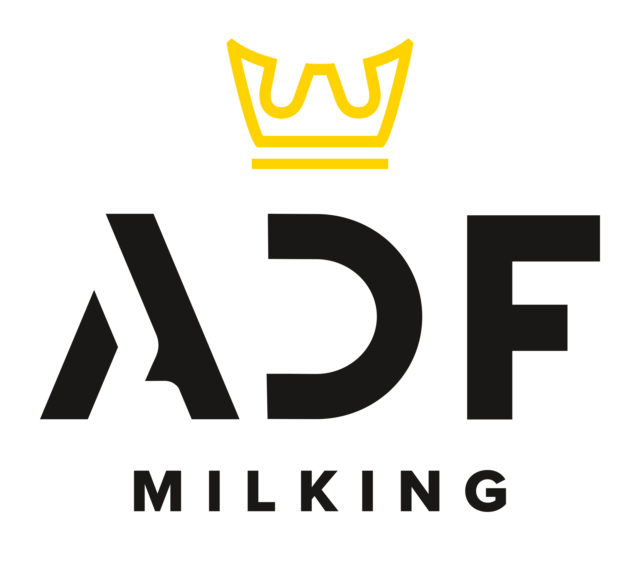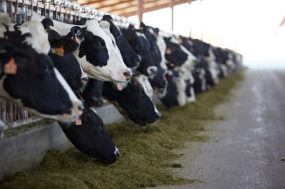Throughout history, agriculture has undergone many revolutions, from the ancient practice of domesticating animals and plants thousands of years ago to the implementation of innovative farming techniques like crop rotations a few centuries back.
We are now seeing another revolution, fuelled by the rapid development and increasing popularity of artificial intelligence (AI). AI tools are becoming more popular among farmers because they behave like high-tech helpers who assist with daily activities on farms.
So what is AI about?
In a nutshell, one can think of AI as the brain of a computer system, helping machines mimic human skills linked to intelligence such as being able to see, understand and respond to spoken or written language, analyze data, etc. It's important to note that AI tools come in all formats and shapes. They encompass a diverse array of technologies, such as smartphone apps, camera systems, benchtop equipment, milk meters, eartags, boluses and more, typically integrated with accompanying computer software.
As a farmer, how should I approach this?
Farmers face the challenge of selecting the most suitable solutions for their specific needs, considering factors like their farm size, budget and the compatibility of prospective tools with their existing infrastructure. One critical consideration is the learning curve associated with adopting these technologies. Dairy farmers may need to invest time and resources in training to fully harness the potential of AI solutions. Sometimes, farmers will be required to become adept at interpreting the insights generated by these technologies and translating these into action.
As a general rule, consider the number of hours you are expected to put into learning how to operate this new technology, your level of comfort with it, the estimated gains associated with the technology, and think of any potential disruptions to established routines and workflows.
It also helps to approach the integration process with a discerning eye. This involves seeking advice from colleagues making use of this technology and perhaps starting with smaller-scale implementations before committing to extensive changes. Pilot projects can help farmers evaluate the impacts of AI on their operations without exposing the entire farm to potential risks.
Another important consideration is the sustainability and long-term viability of AI tools. Current AI tools might become obsolete over time. Farmers need to assess not only the immediate benefits but also the longevity of these solutions. Concerns about continuous updates, potential obsolescence and the overall cost-effectiveness of adopting AI systems should be carefully weighed against the expected returns. Given the dynamic nature of technology, regular updates are often necessary to address evolving challenges, enhance functionalities and stay current with industry standards. Farmers need to be aware whether AI providers will likely continue in business, providing regular updates to their tools at a reasonable cost.
It is also recommended that farmers discuss the potential of false alerts with their AI providers and determine how often these occur. Not only do false alarms waste time and effort, but they can lead to unnecessary interventions, causing stress to animals and disrupting established routines. Also, farmers may lose faith in the technology if they keep getting false alerts, which would make it less useful overall. Finding the right balance between how sensitive AI technologies are to real problems while minimizing false alerts is essential for fostering a successful and beneficial integration of these tools into established routines.
Data privacy and security is another warranted consideration. AI systems often rely on extensive data inputs, and farmers must ensure their sensitive information, such as health records and personal data, is adequately protected. Understanding the terms of data ownership and usage in collaboration with AI providers is crucial.
What are some of the practical applications for AI in the dairy industry?
In recent years, there has been a rapid growth of interest in and applications of AI to support dairy farms, with an almost exponential increase since 2010. Here are a few selected applications that hold promise for future on-farm implementation.
Lameness
Lame cows often exhibit an altered walking pattern, characterized by a limp or an uneven gait. They may favour one leg or show reluctance to put weight on a particular hoof. Lame cows also tend to reduce their physical activity, including walking and moving around the barn or pasture. In the pursuit of early detection, scientists have explored innovative approaches such as utilizing AI to interpret data generated by videos or accelerometers to detect lame cows. This approach demonstrates around 75% to 85% accuracy in correctly identifying both lame and normal cows, which is promising but still prone to false positives.
Mastitis
Considerable research and development efforts have been dedicated to creating AI applications for the early detection of mastitis on dairy farms. These applications are based on the detection of a variety of markers of inflammation, such as changes in colour, swelling, temperature or abnormalities in the udder, milk components such as somatic cell count (SCC) and historical herd records. The consensus seems to be that the predictive power of machine learning models to identify cows with mastitis is high but not high enough to be implemented in practice due to too many false-positive alerts.
Reproduction
Machine learning has many applications in the context of animal reproduction. AI-powered systems can analyze data from sensors, wearable devices or even visual cues to accurately detect signs of heat in cows, indicating the optimal time for insemination. This has been demonstrated recently, where AI-powered systems performed as well as veterinarians to detect cows on estrus based on data from accelerometers and positioning systems. While these tools were effective in detecting estrus, machine-learning predictions of cow conception, calving and dystocia are generally suboptimal.
Leveraging data from neck tags and accelerometers, researchers developed AI models for identifying cows within eight hours of calving. The system's positive predictive value, related to its specificity in detecting cows approaching calving, ranged from approximately 60% to 80%. In practical terms this means, at best, 20% of the alerts generated by this system would be false alarms.
Feed intake
A research team from Israel developed an automated system for measuring individual cow-level feed intake using cameras connected to a computer. The system relies on monitoring the disappearance of feed in front of the cow and, through machine learning, estimating the amount of feed consumed at each feeding. Although the system is in its early stages of development, it shows promising potential, especially if the data generated can be integrated into models for disease detection. The investigators reported an error rate of less than 200 grams per meal, meaning their system could be used to accurately predict the amount of feed consumed at each meal.
Bottom line
Integrating AI tools into the dairy industry presents significant opportunities for farmers. However, it is crucial to consider factors such as learning curves, sustainability, data privacy and data security when implementing these technologies. Farmers should adopt a cautious approach, as they typically do when introducing new technologies. Tools for detecting diseases such as mastitis and lameness, as well as those facilitating the detection of animals experiencing heat and dystocia, look promising. Nevertheless, reducing the number of false-positive alerts remains a work in progress for most available tools.










